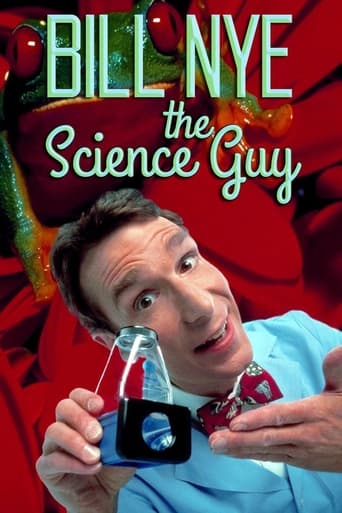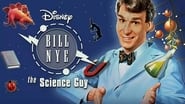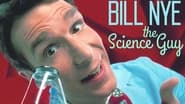Electrified_Voltage
During my childhood in the 1990s, "Bill Nye, the Science Guy" was one of the many shows I watched on TVO. I enjoyed it at the time, and I think I learned some pretty interesting things. I was also sometimes shown episodes of the show back in grade school, and later, in the early 2000s, I was shown episodes in my high school science classes, some of which I could still remember from years before! The show was hosted by Bill Nye, both a scientist and a comedian! Each episode would focus on a certain scientific subject. Bill would talk to viewers about this subject, using a lot of humour and demonstrations. The show featured many different sequences, all having something to do with the topic of the episode, including comedy clips, along with a music video for a parody of a popular song, with new lyrics to fit the subject. Guests were sometimes featured in the series as well.When I was shown episodes of this show in high school, I found that I didn't enjoy them so much anymore. However, that's just me, I'm certainly not saying that only kids would enjoy it. I'm sure some of the other students in those science classes with me liked the episodes they were shown! For many kids, "Bill Nye, the Science Guy" was educational with its science lessons, as well entertaining with its humour! It could also do the same for certain high school students, and maybe others. In conclusion, Bill and the others behind this show deserve a lot of praise!
Seth Nelson
From 1988 until very early 1995, my family and I used to live in the Seattle area (yuck!!!!!). That was the setting of the very great educational Disney/PBS program, "Bill Nye, the Science Guy!!!!!" Our host, Bill Nye, showed us everything about experiments and science in a cool and fun way!!!!! It always started off at the "Nye Laboratories" door, then we go on to "The (insert many words here) of Science!!!!!" (fanfare) And here, Nye showed us how a different science is possible. We also learned many other great things from his lab to out in the world!!!!! We also talk with real life "scientists," do fun experiments in our kitchen, plus there's some funny skits that tied in with, well, SCIENCE!!!!! After all of that, we wrap up the day's episode with a music video, also explaining science.I remember I was at a mall in Seattle in December, 1993, and I actually met Bill Nye at a book signing!!!!! BTW, my family still has the book today: "Bill Nye the Science Guy's Big Book of Science!!!!!," published by Addison-Wesley, in 1993."Bill Nye, the Science Guy" was a terrific science show and probably the most academic work the Disney company has ever made in its "Golden Age." I only wish the show were on TV today, and along with my top-class private education, made me understand the universe a whole lot better. (Try THAT with "WILL OF THE BUTCHER" or whatever that bad time traveling DCOS is, LOL) Oh, and did I mention: SCIENCE RULES!!!!!10 stars, indeed!!!!!
endangeredsp
Uhhh... just a note... Bill is NOT dead. :-) I guess it does seem that the man is dead, they took his show of the tube. But he's not dead. This show was the best. If they ever decide to put this on DVD for an affordable price, you have GOT to get this and show it to your children, their children, and their children's children. :-) Science rules. Love this guy. I hope they bring the show back to television. Sign the online petition to lower the price of the dvds. Do a google search for bill nye and the key word, petition. The petition will be sent to Disney to get them to lower the price.
Mr. Snl
This is a great show and i hope it sticks around for a long time. It teaches kids many different things about science and uses things that they find enjoyable and fun to watch. For example, on the dinosaurs episode, they had two kids put their bare feet in paint to make footprints on paper...kids love to get their bare feet very messy! On the momentum episode, they had pies thrown at Bill's face. I don't know anyone who doesn't like getting a pie in the face! Kids like to walk around in bare feet also, and in one episode, these two guys were in their bare feet and they fell over in their chairs so you could see their bare feet. It was great. I really like how this show relates to kids. Kids love it and I hope it's around for a long time!



